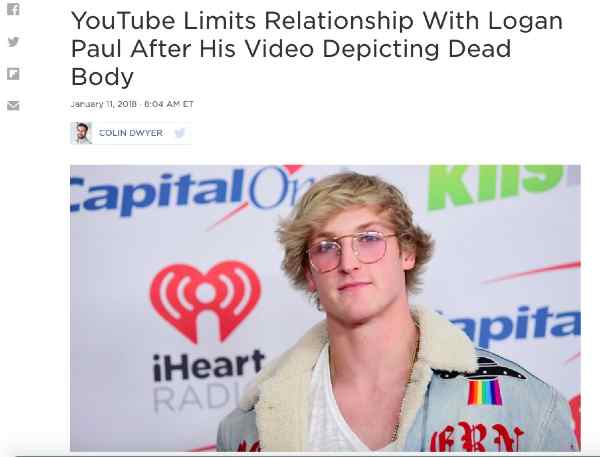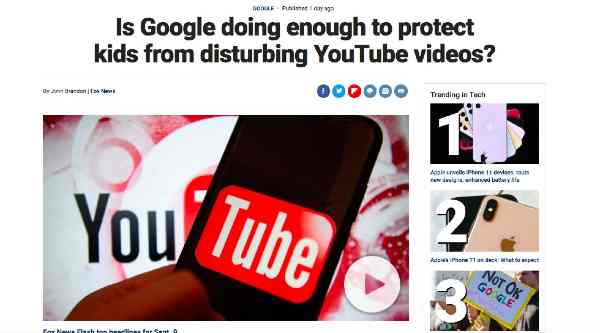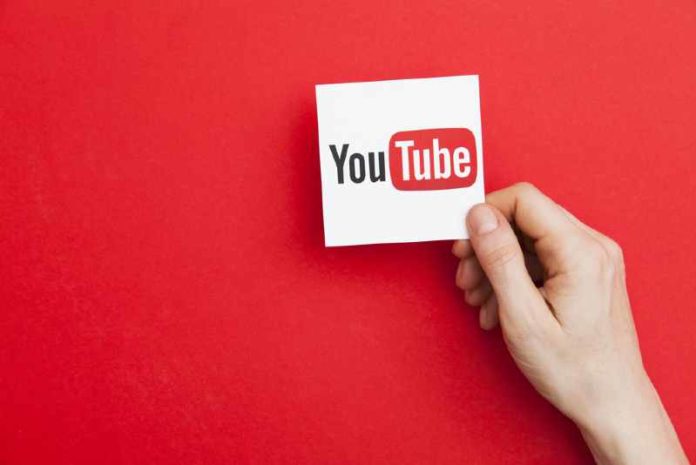And What It Means for the Future of Video Marketing. Since the newest YouTube policy has been installed, more than 17,000 channels, 100,000 videos, and 500 million comments have been deleted. That’s as many as five times what the mega-video platform removed in the last quarter.
 Image Source: YouTube
Image Source: YouTube
This wipe-out of hate speech videos and comments is somewhat unsurprising. There’s been an outcry from the public in regards to YouTube’s lack of policing when it comes to hateful content, including politically and socially offensive topics.
Although most are glad to see harmful videos removed, others are hesitant to accept the new policy as a total fix. As Sarah Perez said on Tech Crunch, “The company… is haphazardly attempting to draw a line between what’s considered hateful content and what’s considered free speech.”
YouTube is THE biggest video streaming platform and the second largest search engine behind Google. It’s where we share everything from funny cat videos to our newest marketing campaigns. Therefore, many advertisers and content creators are wondering: what will this more stringent policy mean for the average marketer?
How YouTube Catches “Bad” Videos
Before we can answer that question, let’s talk about YouTube’s methodology for sifting through and removing questionable content. Since 2017, the video platform has increased its usage of machine learning to find content that is similar to other content that has already been removed.
Generally, this strategy is effective for fighting spam and removing inappropriate content. However, it does beg one question:
Can a machine really understand the nuances of human conversation and language enough to decide what is “bad” and what is “good”?
At the end of the day, YouTube wants to preserve the right to free expression while also “protecting the community.” Some content, like child sexual abuse images or terrorist recruitment videos, are full of red flags. But what about the more complex videos?
Some feel that YouTube leans too far toward “committing to openness.” In a recent interview with CNBC, YouTube CEO Susan Wojcicki was quoted saying:
“A commitment to openness is not easy. It sometimes means leaving up content that is outside the mainstream, controversial or even offensive.”
For now, YouTube will continue to flag hateful videos by using machines to scan for discrimination in regards tor:
- Age
- Gender
- Race
- Religion
- Sexual orientation
However, many people question if this is enough. There is some human review in the mix of YouTube’s strategy, but not a ton. Can machines differentiate between what is hate speech and what is a strongly worded opinion that could be perceived as controversial?
What’s Considered “Problematic” When It Comes to YouTube’s Video Policies?
As a marketer, the most important thing to understand is what potentially violates YouTube’s hate speech policies. Although most marketers likely don’t set out to preach hateful topics, it’s not difficult to border on harassment or other concerns that fall in a gray area.
Let’s discuss the areas where marketing teams could stumble into a gray area with YouTube’s hate speech video policies.
Partnering With Influencers
YouTube has been burned by popular vloggers before. Back in 2018, Logan Paul posted a video of a dead man, and the video received millions of views (and hate) before it was removed.
 Image Source: NPR
Image Source: NPR
Since then, YouTube has been on the lookout for reports from users across the internet, including on news and social media. The backlash from that particular incident was terrible, and the platform has cracked down on any big-name vloggers that could jeopardize the site’s reputation.
This isn’t to say that you shouldn’t partner with influencers and vloggers on YouTube. Influencer marketing can be incredibly impactful and beneficial.
However, you should be careful about the influencers you choose to work with to avoid stumbling into a situation where the hate policy is violated. Only work with content creators that have a solid reputation and golden track record.
A marketer might not directly violate YouTube’s new policies, but the company could be associated with an influencer who violates the hate speech regulations, and that’s just as bad.
Making Outrageous Claims
Recently, YouTube has been making extra efforts to remove spam from the site. This includes misleading descriptions, tags, titles, or thumbnails.
Just because you’re marketing a product or service doesn’t mean you can post repetitive messages or clickbait. Doing so increases your risk of receiving a warning from YouTube and ending up in the “risky” pile of video marketers.
To learn what YouTube considers to be misleading or spammy, visit the site’s full policy.
Marketing Directly to Children

Image Source: Fox News
More and more parents and childhood experts are concerned about the platform’s potentially detrimental effects on children.
 Source
Source
Although your message to children might seem harmless, if YouTube doesn’t agree, you could wind up in trouble. Look into YouTube’s work with law enforcement and child endangerment policies to ensure that all of your marketing messages are safe for minors.
Upcoming Changes to YouTube’s Policies and Procedures
YouTube is set to “release more information in the coming months” about their other steps to fight problematic content. One of the biggest changes we can expect to see is an emphasis on rewarding content creators that continuously produce ethical, beneficial, and positive content.
 Image Source: YouTube
Image Source: YouTube
As YouTube works to not only remove bad content but also to strengthen its good content, marketers will benefit more and more from creating visibly authoritative and positive videos.
For instance, YouTube’s algorithm could very soon begin placing the videos of “rewarded” content creators in the “Up Next” section to encourage the production of trustworthy, beneficial videos.
As a marketer, if you want to get on YouTube’s “good side,” then create videos that are:
- Educational rather than slanderous
- Based on true facts rather than unbacked opinions
- Full of interviews or comments from real professionals that can be trusted
- Positive and original
The Four R’s Guidelines
YouTube CEO Wojcicki released a guideline to help people understand the punishments and rewards that posters will receive for certain kinds of content.
- We REMOVE content that violates our policy as quickly as possible. And we’re always looking to make our policies clearer and more effective, as we’ve done with pranks and challenges, child safety, and hate speech just this year.
- We RAISE UP authoritative voices when people are looking for breaking news and information, especially during breaking news moments.
- We REDUCE the spread of content that brushes right up against our policy line. Already, in the U.S. where we made changes to recommendations earlier this year, we’ve seen a 50 percent drop of views from recommendations to this type of content, meaning quality content has more of a chance to shine.
- And we set a higher bar for what channels can make money on our site, REWARDING trusted, eligible creators.
In Conclusion
As YouTube users and consumers, we should all be happy that YouTube is working to remove harmful, offensive content quickly and strenuously.
However, as a marketer, this means that you need to be conscious about posting the right kind of YouTube videos to reflect your brand. Now is the time to focus on being authoritative and positive, regardless of the tactics your competitors might employ.
Arvind Patil is a Digital Marketer at E2M Solutions Inc, a digital agency specializing in white label SEO, and website design and development. He enjoys performing SEO analysis while creating content strategies that connect brands with their target audience. When he is not busy analyzing digital marketing trends, he prefers traveling. @arvindpats
YouTube stock photo by Ink Drop/Shutterstock







